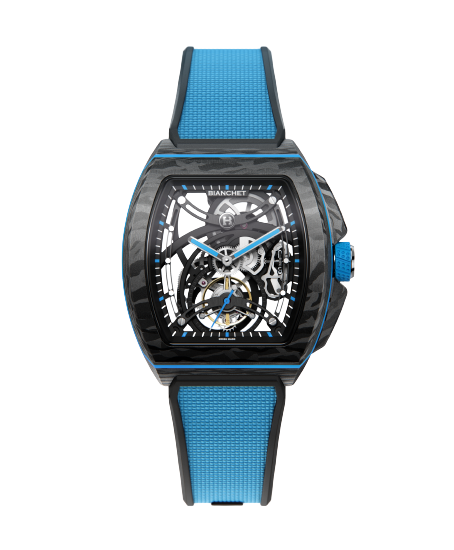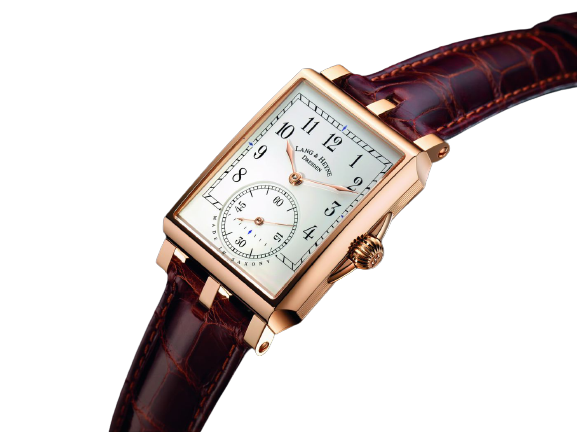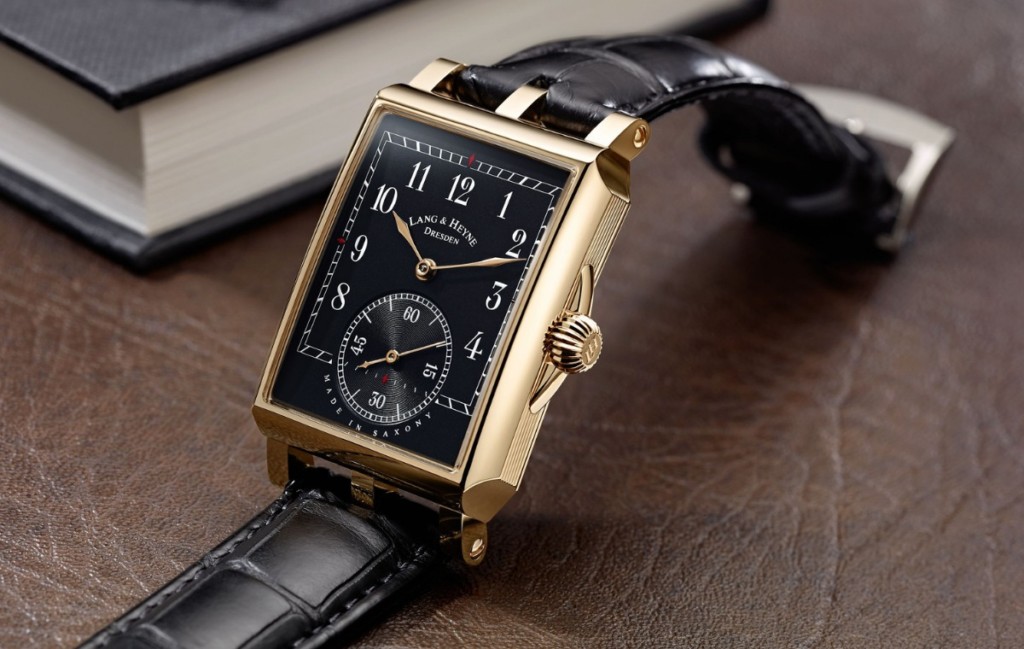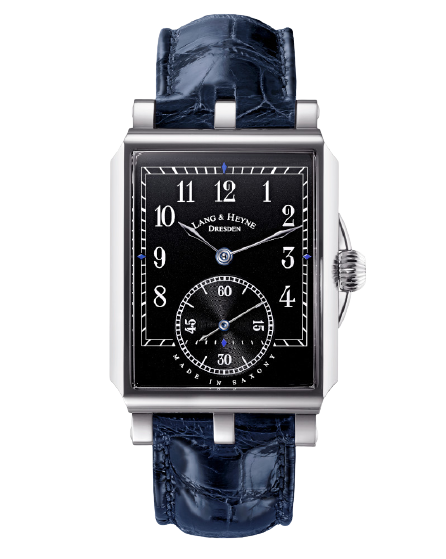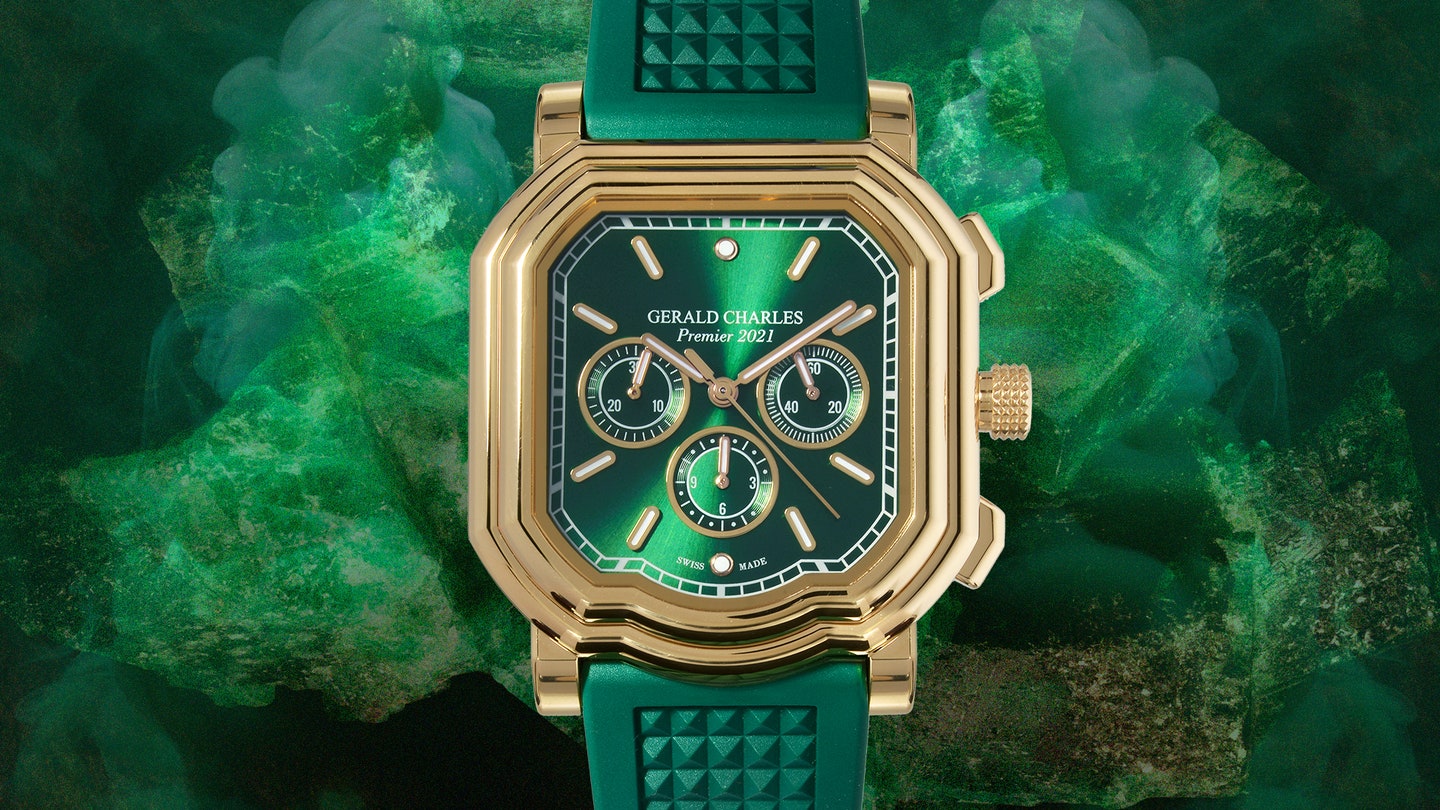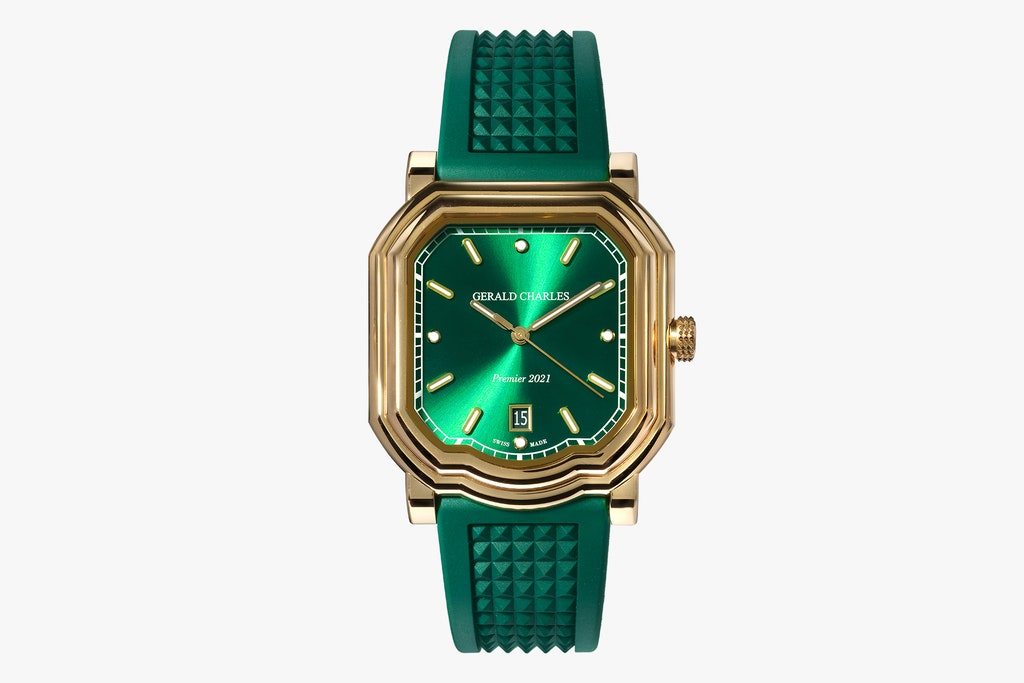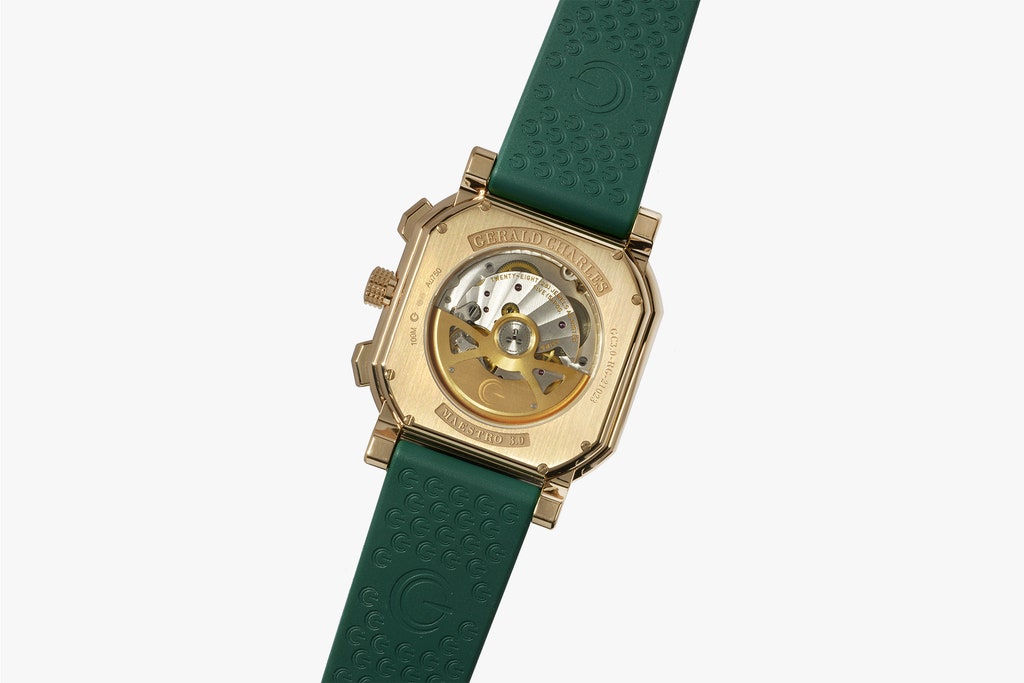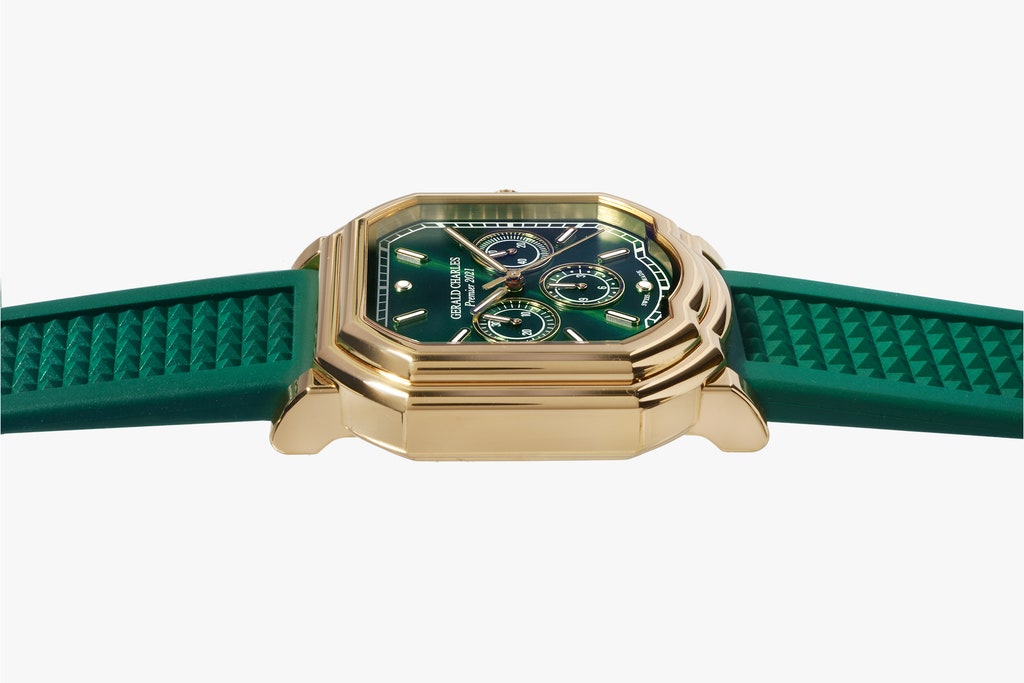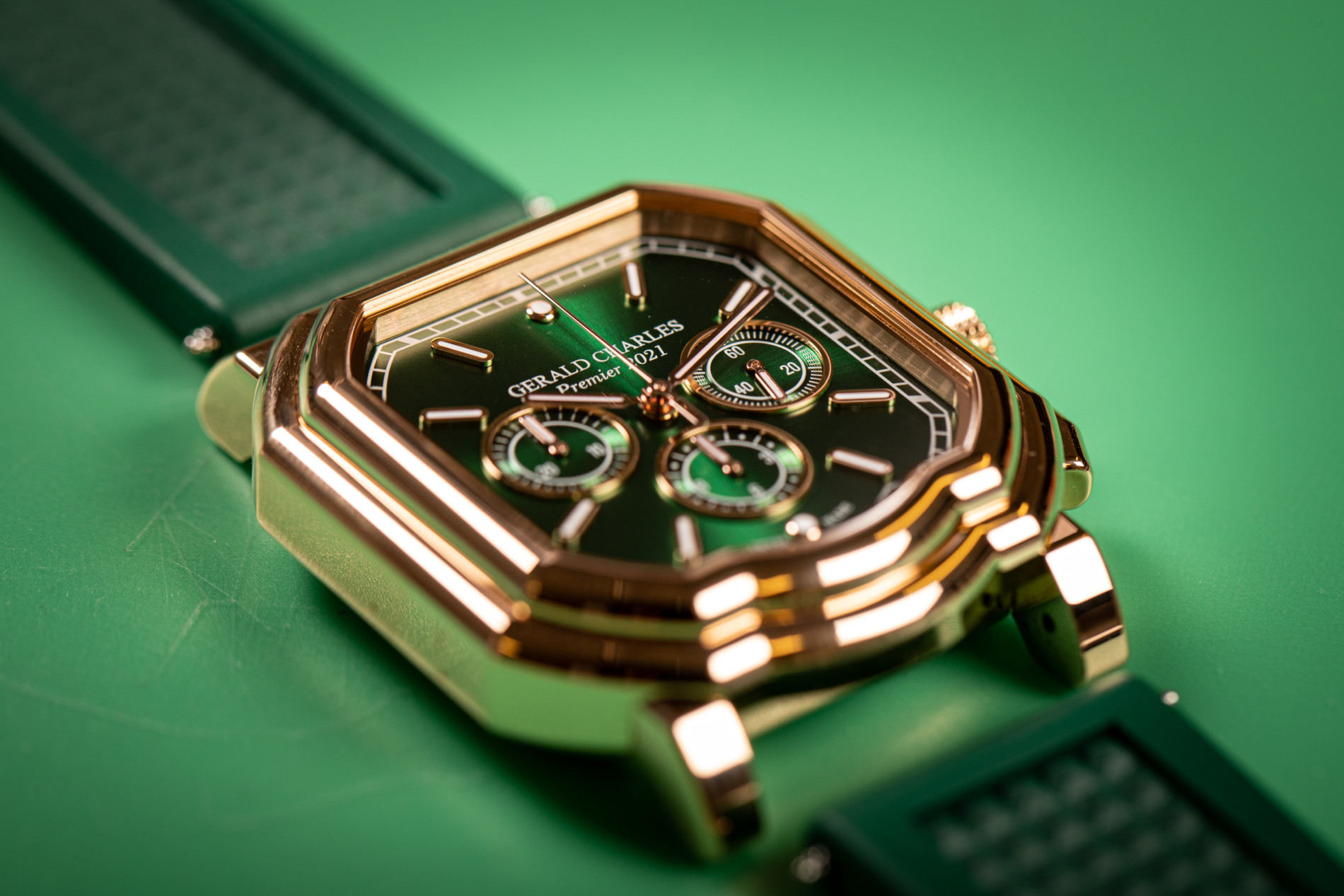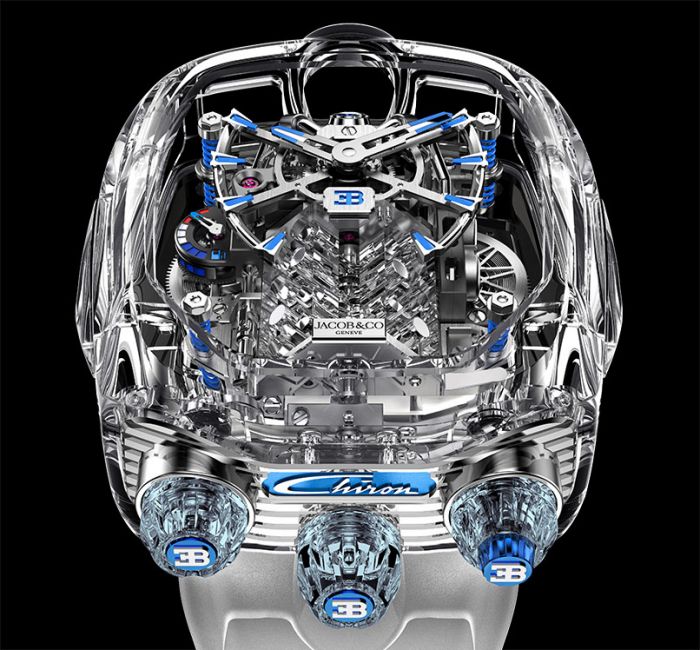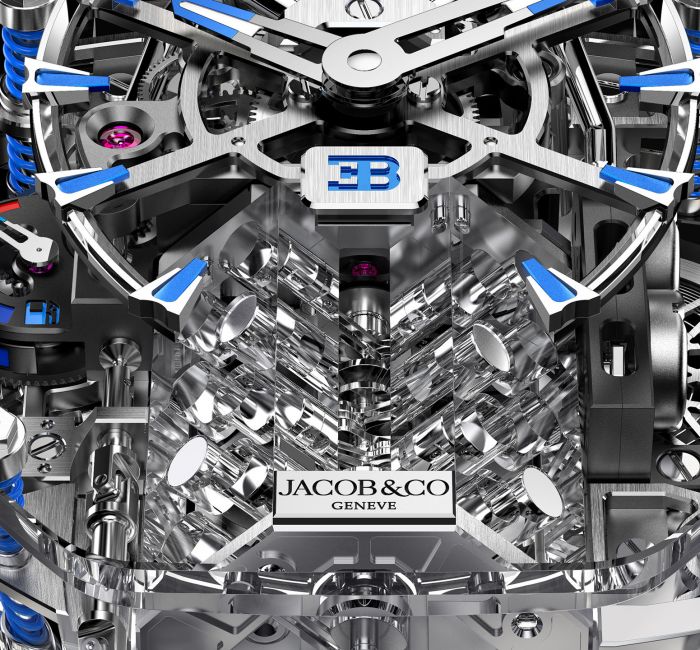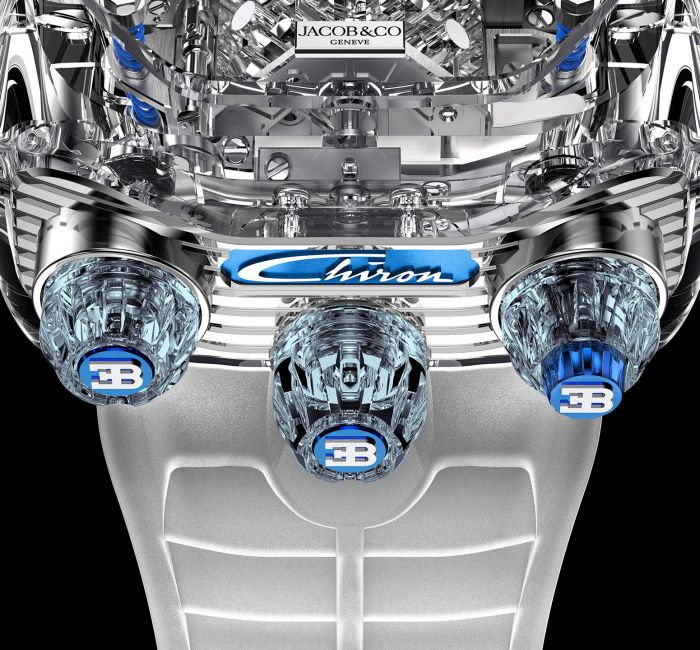Geneva Watch Days 2021
Press Release
BIANCHET presents
Tourbillon B1.618 Openwork
Divine curves
A balance of proportions, a dramatic arc in each curve, the depth of the movement – if the Tourbillon B1.618 Openwork’s color accent catches the eye, it is the spirit behind it that draws you in. Uniting the sensory, cultural, mathematical and mechanical, this skeleton tourbillon was conceived and designed according to the principles of the Golden Ratio of 1.618 and the Fibonacci sequence. The tonneau shape of the case, the design of its movement, the Italian aesthetic sensibility: Everything within it expresses a harmony of lines and a natural sense of balance that makes it a watch of our time for our time.
New to the world of complicated watches, Bianchet is a creative contemporary Swiss watch brand founded on the modern reinterpretation of the Golden Ratio – 1.618 – in the world of fine watchmaking.
A defining feature, the sleek tonneau shape is echoed by two embedded lines of color that underscore the sense of balance the watch conveys. At the origin of the creative process, the Golden Ratio of 1.618 provides the mathematical basis for elegantly bringing into being a modern and timeless testament to beauty in watchmaking, where sophistication and simplicity play off each other. Divine curves, perfect proportions, a creative space that brings out the aesthetic in the geometric – Bianchet lays the foundation for its inspiration through its faith in the purity of lines, its passion for contemporary design, its passion for architecture, coupled with a pure, intuitive sensibility nourished by Italian roots.
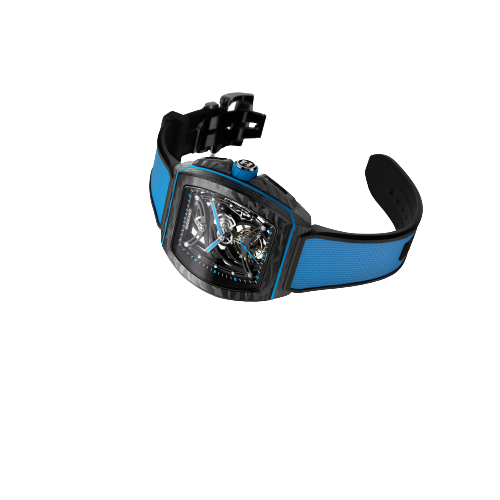
When form is substance
The Tourbillon B1.618 Openwork’s tonneau case measures 43 mm in width, 50 mm in height (length) and 13 mm in thickness. From the side, the top and bottom of the watch follow a curve. The superposition of these two lines, the colored seam, the thickness of the bezel, the play on heights – they are guided by the Fibonacci sequence. An organic arc that affords maximum wear comfort, perfectly espousing the wrist.
The case is available in titanium with multiple variations of hand finishing, each quite distinctive, even on the smallest surface areas. Nothing has been left out. Polishing, satin-finishing, and microblasting succeed each other from layer to layer, emphasizing the curves and their dramatic arc, marking the sharp edges of the bezel, all highlighted in bright red.
A carbon case, with the accent in blue, is also an option for the Tourbillon B1.618 Openwork. The composite material – light, hard and technical – has a special formulation: titanium powder has been added to the carbon fibers. Together, the two materials create a moiré effect that alternates between shiny and matte in a random pattern unique to each piece. In the hand, on the wrist, to the touch – the curvature and lightness of the Tourbillon B1.618 Openwork provide a feeling of completeness and harmony. It naturally flows from the Golden Ratio.
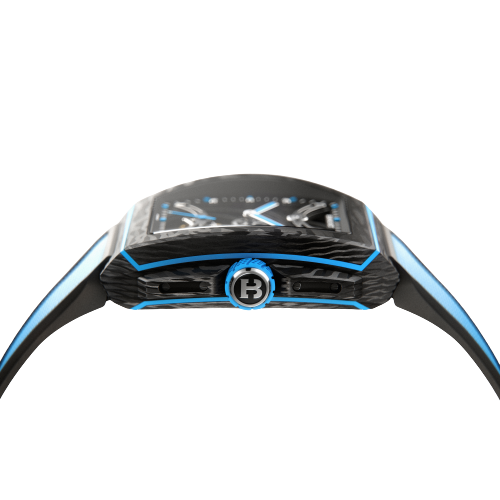
The secret of the ratio
The Golden Ratio of 1.618, derived from the Fibonacci sequence, is the founding principle of the Bianchet aesthetic and the inspiration for naming the collection – B1.618. The Fibonacci sequence is an algorithm at work in the shape, growth and arrangement of multiple living creatures. It is intimately linked to the Golden Ratio and together they govern the relative dimensions of a Bianchet’s case and movement. Inspired by the graphic representation of the sequence – a spiral drawn with squares of increasing size as the sequence progresses – the two guide the forms of the bridges and the curves of the tonneau case. Ultimately, the symbolic value of the Golden Ratio connects Bianchet to a search for harmony that reaches beyond the mere contours of the watch. The relationship between nature and culture, between geometry and biology, between the aesthetic and the metaphysical, that is at the core of Bianchet’s thinking.
Bianchet is about re-engineering a timepiece by applying the Golden Ratio to contemporary watchmaking. Indeed, breaking free from the classical and traditional culture with which the number has generally been associated, the Golden Ratio is applied to a totally modern design, with the materials, manufacturing techniques and performances of today. They all come together in the B1.618 collection.
At the heart of the matter
Inside the Tourbillon B1.618 Openwork, another object of fascination, the Calibre B1.618. Watch enthusiasts since they can remember, Emmanuelle and Rodolfo Festa Bianchet freely admit their fascination for this complication. Its ability to overcome the effects of gravity by rotating is founded on a principle in which the mathematics determine the physics and come ever so close to aesthetics, a truth of the same magnitude as that of the Fibonacci sequence.
Skeletonized, the calibre is made entirely of black DLC titanium. It was designed and developed and is now manufactured by Bianchet in La Chaux-de-Fonds, in the heart of the Swiss watchmaking industry. The process of making a Bianchet is focused as much on quality as on technical excellence, the main objective being to obtain a perfect balance between form and function. The Tourbillon B1.618 Openwork has a power reserve of 105 hours.
Depth of perception
Yet this calibre is not satisfied with just a noble complication. The execution, too, captures the imagination with graphic force and true originality. Conceived from the outset as a skeletonized movement, the Calibre B1.618 is all about a sensation of plumbing untold depths, a feeling only accentuated by the curves, whose radii, progression and interlacing are also derived from the Fibonacci sequence.
Instead of following a traditional design that builds on concentric circles, which in effect only reflects the requirements of the mechanics, Bianchet has decided to make the Golden Ratio an integral part of its creation. As if a mathematical object in motion, the spiraling Fibonacci curves are found at the heart of the movement, evoking the double-mirroring of a miseenabyme, less a stylistic effect, and more a measure of the young brand’s depth.
Substance counts
In other words, the design of the B1.618 caliber is unique. The curved and openworked tourbillon bridge. The barrel bridge, which responds with perfect symmetry. The floating and skeletonized flange. The structures and textures in shades of black that cut across. The symmetrical plays off the asymmetrical, in a balance that is natural to the eye, with a harmony that is the intrinsic to the Golden Ratio.
The Tourbillon B1.618 Openwork is the result of genuine aesthetic research. The short lugs on the case in themselves already enhance wear comfort. The supple strap made from natural rubber naturally follows through. The sporty elegance of the distinctive color seam that intersects the various parts of the case – be it in carbon or titanium. This through-line is a Bianchet’s unmistakable signature. The seam, functional and following a specific cut, first embedded then adjusted by hand between the different components, highlights the case’s curvature. It also defines a chromatic theme, extending to the hands and hour markers as well as to crown’s rubber insert and the strap.
Eminently wearable in every way
By definition sporty-chic, the Tourbillon B1.618 Openwork is water-resistant to 50 meters
(5 ATM) in the titanium version, 30 meters for the carbon version and features a crown guard. As a sign of the confidence Bianchet places in its manufacturing process, the watch is guaranteed for five years. The figure reflects a physical quality of the movement: its components are made of Grade 5 titanium, including the bridges of the tourbillon cage. The material’s low weight and high rigidity further enhance the calibre’s reliability.
With the metal used for the components and case, the Tourbillon B1.618 Openwork in titanium weighs in at less than 55 grams. The carbon version weighs 33 grams without the bracelet. In other words, the Tourbillon B1.618 Openwork is practically imperceptible when worn and that feeling of harmony between watch and wearer is only underscored by the watch’s natural curvature.
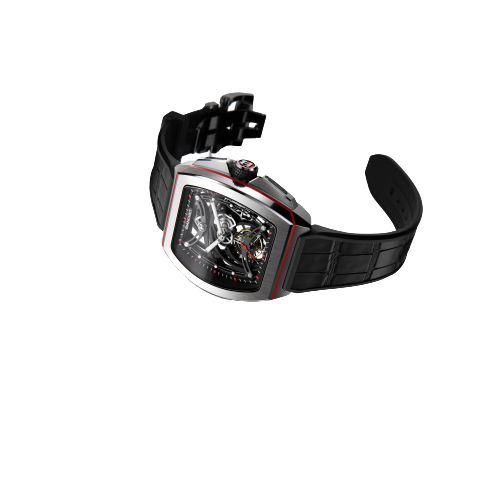
To the beginnings
Bianchet: a brand that embodies the passion of the founders, Emmanuelle and Rodolfo Festa Bianchet, for watchmaking, their convictions and above all, their aesthetic sensibility. It would be four years before the inkling of an idea became Bianchet the brand.
Bianchet’s beginnings date back to 2017. Rodolfo Festa Bianchet was then a successful entrepreneur in the Fintech sector and CEO of Riflexo, the Turin-based software developer behind the first online trading app for smartphones. The app, Trade Interceptor, is built around the proprietary TrendRisk engine and analyzes market psychology to detect trends. The brainchild of Rodolfo Festa Bianchet, it, too, is based on the Golden Ratio of 1.618 and the Fibonacci sequence.
Emmanuelle Festa Bianchet, Rodolfo’s wife, was born in Rome to a French family of artists and musicians, and attended the Conservatory. A painter and sculptor, she regularly exhibits her works in art galleries. She, too, always had a particular affinity for the harmony that emanates from the Golden Ratio of 1.618 and the Fibonacci sequence.
When their software company was acquired by a US buyer, they seized the opportunity to concretize their passion for watches and watchmaking. Bianchet was born from the shared belief in creating something beautiful, something as strongly anchored in reality as it is connected to the timeless.

